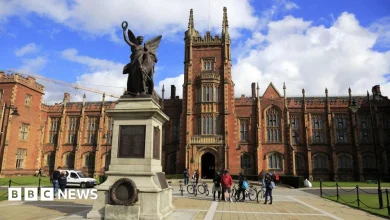Unemployment at its highest level in four years

The latest Labour Force Survey shows the employment rate of 74.7pc is very slightly down, but an extra 25,900 people are out of work since this time last year.
The unemployment rate for those aged 15 to 24 years old stood at 14.1pc in the last quarter, up from 11.5pc in the same quarter last year. The total number of unemployed people in this age group was 54,800, up 9,400.
There is widespread anecdotal evidence that companies have stopped or reduced their hiring of young graduates, because so much of the basic work they traditionally do is now automated.
Dermot O’Leary, chief economist at Goodbody, said the overall rise in the unemployment rate is being driven by increases in both the 20-24 age cohort, and the 35-44 one. “In relation to the former, there has been some international evidence that the graduate employment market has become more difficult, and may be reflected in these trends in Ireland too,” he said.
There is now a steady statistical pattern pointing to a loosening in the labour market, albeit following several years of record growth. While the wider economic uncertainty caused by US trade policy is one factor in companies’ reluctance to hire, there is an unexpected weakness in recruitment in the public sector.
“Public administration, down 6.8pc year on year, was the weakest sector, which is surprising in the context of the ongoing rise in public spending and in contradiction to the monthly administrative data from the Central Statistics Office,” Mr O’Leary said.
“The second worst performing sector is Accommodation and Food, which successfully lobbied for a Vat reduction for 2026 in the most recent Budget. ICT employment fell by 4.4pc, including a particularly large fall – down 14pc year-on-year – in employment of computer programmers.
“It is too early to tell but AI automation may be playing some role here and is consistent with some commentary in the most recent PMI surveys for Ireland.”
On a seasonally adjusted basis, employment increased by just 0.1pc quarter-on-quarter, and is up 1.1pc year on year, which is the lowest performance since the Covid-19 period of early 2021.
Andrew Webb, chief economist at Grant Thornton Ireland, said the figures confirmed that the labour market is softening. “Employment is still rising, but only modestly, and the unemployment rate has climbed to the highest it has been in four years,” he said.
“Beneath those headlines, the CSO’s potential additional labour force figures provide another important signal. The number of people with a loose but real attachment to the labour market stands at 119,200. That group is smaller than a year ago, but significantly larger than in 2023, with sizeable shares held back by illness or disability, or caring responsibilities.”
He said this suggests the labour market is struggling to draw people on the margins into work, and the challenge for policy makers is to remove participation barriers such as affordable childcare.
More than six in 10 people in employment now say they never work at home.




